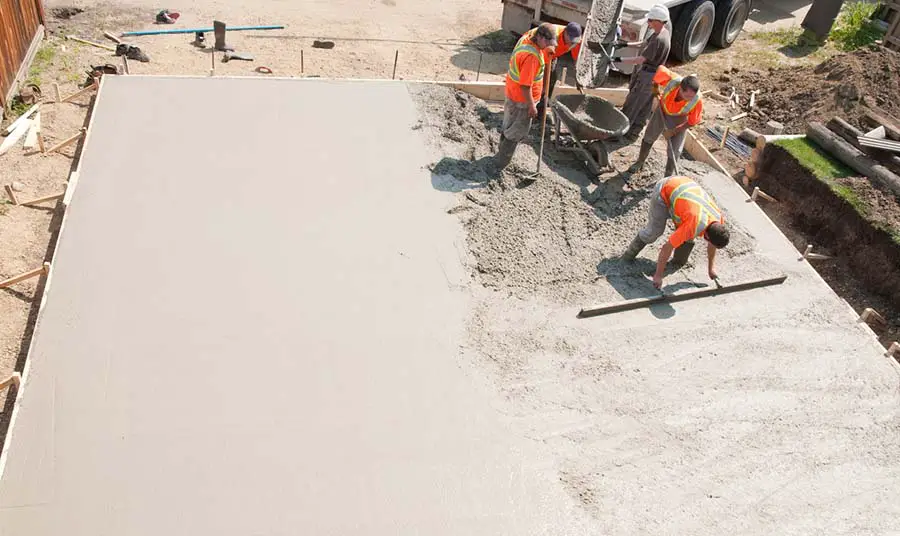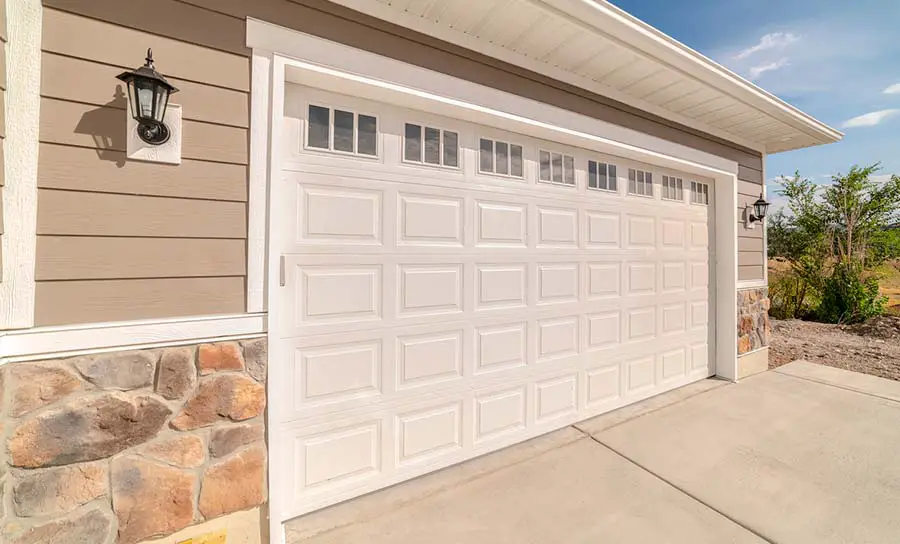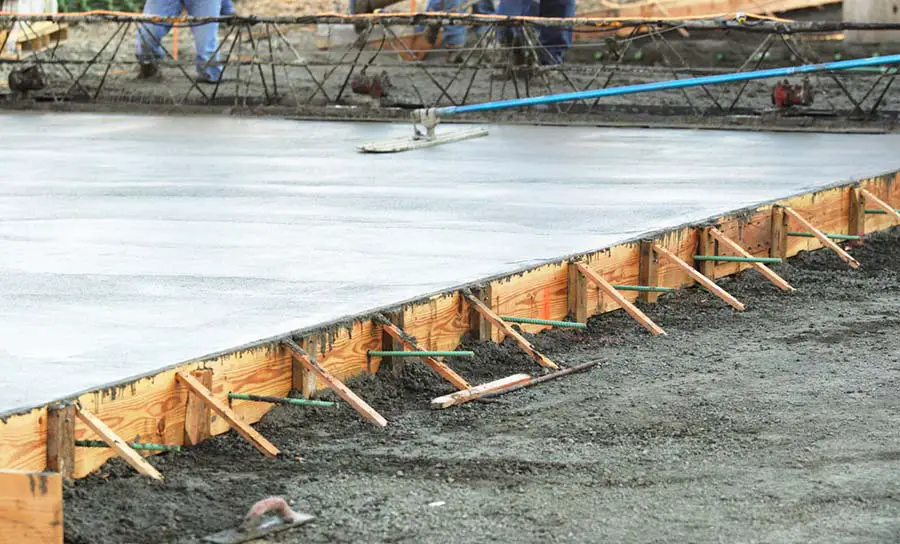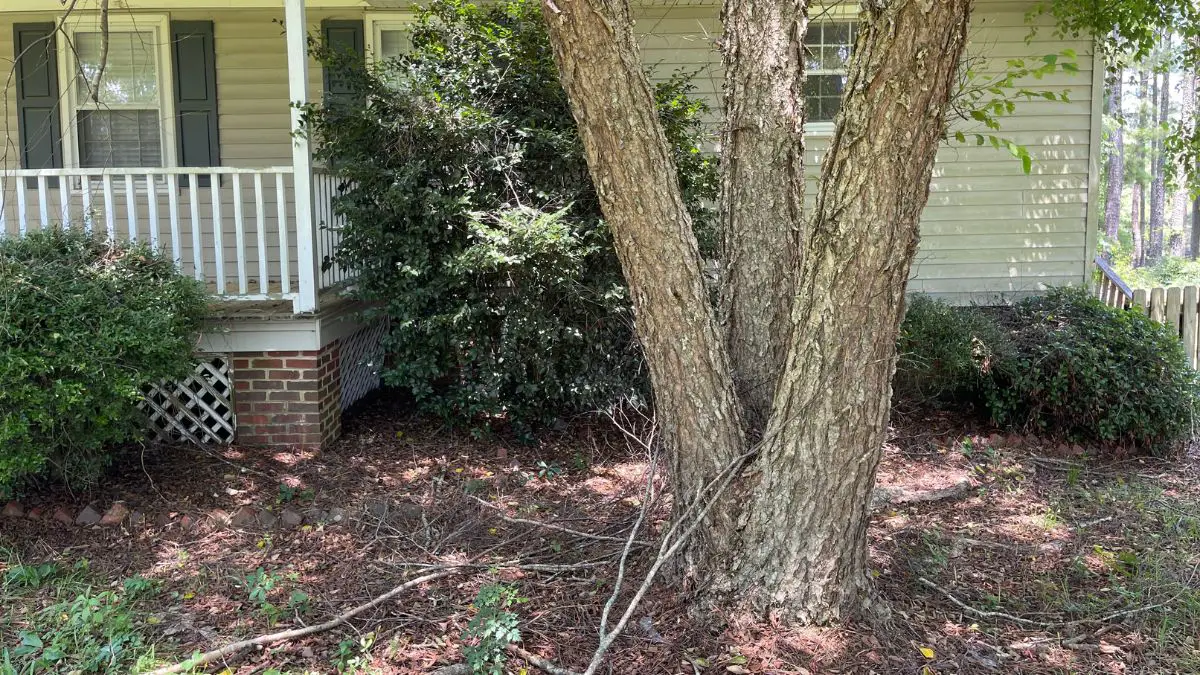
Foundations are essential for the safety of every home. Strong foundations shield the house and its occupants from forces of nature such as snow, strong winds, and hurricanes. But how about garages? Do they need foundations too?
To build a sturdy garage, you need to pour a foundation. Concrete foundations for smaller structures like sheds are often optional, but a garage needs a foundation. The type of foundation you need for your garage depends on the environment, your garage layout, your budget, and many other factors.
You must include a garage foundation to transmit the building’s load safely to the ground. Without it, your garage may not be as stable or safe as it should be.
This guide discusses the factors you should consider when building a foundation, the materials you can use, and the most important tips you need to bear in mind during the construction of the foundation.
Factors to Consider When Building a Garage Foundation
You cannot wake up one day and decide to build a garage, thinking that the garage floor is all you need for stability. That kind of building requires planning. And you must consider important factors during the planning process. Below are some of them.
- The environment you will build in
- Local building regulations
- the structure you intend to build
- Function of the garage
- Amenities to be included within the space
- Your budget
In the following sections, ill take a more in-depth look at each of these factors.
1. Environment You Will Build In
The environment you live in has a significant impact on the kind of foundation you can build for your garage. Each geographical region has its share of challenges that it presents to builders of foundations.
For example, one area may have flooding issues while another may have a snow and frost problem. When it floods, your walls may separate from the foundations, or the water seeping through may widen cracks within the foundation.
On the other hand, if you have snow issues, the continuous melting and freezing of snow can cause concrete foundations to contract and expand, thus increasing the size of cracks within them. Also, freezing temperatures can cause a frost heave, where soil swells and puts pressure on the area around the foundation. That may cause a lot of damage to the foundation and compromise its integrity.
But that is not all there is to the environment and how it affects the garage foundation. The type and quality of soil matters too.
For example, if your soil consists predominantly of clay, your garage foundation is more likely to be affected by frost heaves. However, sand and gravel have better drainage capabilities. But they can get easily washed away, thus leaving gaps around the foundation. And suppose you are lucky to have your property in an area with bedrock or sandstone. In that case, you can easily build your garage foundation without worrying too much about its stability.
Whenever you have unstable soil conditions, you will likely face foundation settling problems at some point. These problems are a result of moving soils underneath the foundation that cause. And over time, your doors and windows will stick, cracks will form on both your interior and exterior walls, and moisture will begin seeping into your garage.
You could solve a weak soil structure issue that causes soil caving by opting for a drilled pier foundation.
In addition, you need to consider whether you live in a flat or a hilly area. What you need to build a garage on a slope is pretty different from constructing it on a flat site. The slope of your land affects drainage and the overall stability of your foundation.
Your soil and entire garage are very capable of moving if you live on a slope. But you will not notice the slope creep until it is too late and you have severe foundation issues showing up in your garage walls and floors.
Therefore, you need to think carefully about the materials you will use to stabilize your foundation from the very beginning. In this case, you may not construct a concrete slab because it is not stable enough for such an environment.
2. Local Building Regulations
What do your local building rules say concerning building garages? Now is the time to think about that if you have never done so. That is because you will likely need a building permit from your local building inspection office. And to get it, you need to present your garage building plans for approval. Also, you must prepare to schedule regular inspections during the garage construction process.
The great news is that you can get an owner/builder permit if one is available in your locale. However, it would help if you were prepared to assume most of the liabilities when you construct your garage. So, it helps to know the basic foundation regulations.
For example, when digging foundation trenches, you need to ensure that they are at least 12 to 18 inches wide and 18 inches deep. However, if you build your garage in an area with a lot of snow, you may need to place your garage footings at least 48 inches below the ground level.
It would help if you familiarized yourself with the International Residential Code. It forms the basis for most county and city building codes. And it will enable you to determine what materials to use, how deep your foundation should be, what garage designs are preferred, etc.
3. The Structure You Intend to Build
How big or high is the structure you intend to build over the garage foundation? And is it going to be detached or part of the existing property?
The overall design of your garage is crucial in determining the kind of foundation you can build. For example, based on the International Residential Code, you must have footings at least 12 inches wide if you make a one-story structure. For two-story garages, your footings must be at least 15 inches wide. But depending on the soil, some could be 12 inches wide.
In addition, the larger your garage is, the bigger its foundation will be because it will have an enormous load to distribute toward the ground. Also, some building regulations may stipulate the size of garages one can build without permits. So, that’s something to think about.
It would help if you also remembered that detached and attached garages might have different foundation requirements, depending on your location.
For starters, the zoning rules tend to be more restrictive for attached garages, and you may have issues getting building permits. As for detached garages, their size may be limited. Also, the building regulations may determine which kind of foundation to use and the measurements required.
For example, based on the building regulations of the village of Little Chute in Outagamie County, Wisconsin, a detached garage must be 960 square feet or less and 16 feet or lower. If you construct a detached garage whose size is 400 square feet or less, you can use a four-inch-thick free-floating concrete slab or something much thicker.
On the other hand, if the detached garage is more extensive than 400 square feet, you must use a grade beam foundation that extends at least eight inches underneath the garage slab. It must also be at least eight inches wide.
4. Function of the Garage
What you intend to use your garage for will determine the kind of foundation you build. The more pressure your garage will experience, the more stable the foundation needs to be.
For concrete slabs, four to six inches is the standard. However, if you intend to use your garage to store heavy equipment and machinery, you may need to create a six to eight inches thick slab.
5. Amenities to Be Included Within the Garage
It would be wise to also factor in the amenities you desire within your garage space. Those plumbing, electrical, and telephone lines must be accounted for in your foundation construction plans. Also, remember to plan for any drainage or radiant heating.
For example, if you opt for dry-well drainage, you need to include the piping in the garage foundation bed and position the drain before pouring concrete. The same applies to a footing drain pipe. It must be included within the building plan and will affect how you build your foundation.
6. Your Budget
How much money you have determines how much flexibility you will enjoy concerning your garage foundation choices. A typical detached garage foundation will cost you anywhere from $4 to $18 per square foot.
Most homeowners will end up spending about $1,500 to $8,500 for a small garage foundation or $3,000 to $7,000 for a 600-square foot garage that accommodates two cars.
However, the overall cost will depend on your location and the environmental challenges. Costs will also depend on the amenities you want, structural requirements, and so on.
What Is the Best Foundation for a Garage?

Concrete has been the longest winning material when it comes to the competition of garage foundations. But, some property owners also use other materials which are also durable.
Let’s compare each material.
1. Concrete
Concrete is a popular material for building garage foundations. It comes in the form of concrete blocks or poured concrete mixture.
Concrete’s famous compressive abilities enable it to resist cracks, breaks, and crumbles due to the structure’s weight above. It is also resistant to rot and decay and, thus, lasts for a long time.
In particular, poured concrete foundations are joint-free, enhancing their strength and making them more impervious to water seepage. Another advantage of concrete is that it is fire-resistant.
However, concrete can settle and crack in unstable soil conditions. And when that happens, unless one fully addresses the source of the problem, a concrete garage foundation will continue to experience more damage.
2. Brick
Brick can also be used to create garage foundations. They are generally cheaper to use and easy to maintain. They also preserve heat much better than their concrete. In addition, they can be pretty durable and may last as long as 50 years.
However, if the casting process is faulty, bricks can crack easily and, thus, affect the foundation’s integrity. Also, they are more vulnerable to ground movements, which makes them more likely to crack. Furthermore, in areas with poor drainage, brick is less impervious to water damage. So during flooding disasters, water may begin to seep through the garage floor.
3. Metal
Some people use metal during the construction of garage foundations. However, when metal is in use, it is usually combined with materials such as concrete. That said, pile foundations tend to use steel beams.
4. Wood
Wood is not a very common foundation material these days. Generally, wood foundations are cheap and easy to construct.
However, wood tends to rot and decay, so it will not last long when exposed to moisture. For it to have any chance at being durable, the soil around the foundation must always remain dry. So, in poor drainage soils, the material is unsuitable.
It is worth noting, though, that pressure-treated wood can work quite well in foundation walls. It is more resistant to water and insect attacks.
5. Gravel
Gravel foundations exist. They usually distribute the weight of the garage structure across the entire frame. It also promotes good drainage and, thus, keeps water away from the garage floor. In addition, they are cheap to make.
However, it is only suitable for garages that already have a pre-built floor. Also, it tends to develop trenches, so you need to re-level the foundation regularly. For that reason, it is a good option for portable garages.
Types of Garage Foundations

Several types of garage foundations exist. Below are some of the popular ones.
1. Slab On Grade Foundation
A slab on grade foundation consists of a block of poured concrete that lies mainly on the graded ground above it. It is formed from a mold that defines the shape and size of the garage. The thickness of the slab will depend on your local building regulations.
However, it has additional support from the thickened edges of the slab.
Sometimes, the slab on grade foundation is known as the floating slab foundation. That is because it tends to float over the ice line as a singular unit.
These floating slabs tend to be more cost-effective to make and usually take just a day to pour. Also, since they don’t have space underneath, they are most resistant to mold and mildew that may have otherwise have formed beneath them.
However, they tend to be low-lying, which makes them unsuitable to areas prone to flooding. And they are harder to jack up, so they are more likely to settle in unstable soils. Furthermore, they don’t provide any space underneath, making it harder for you to install the utility lines and amenities you desire within the garage.
These slabs are excellent for flat areas where the soil is compact, and the ground does not freeze. Gravel can be used to enhance drainage.
2. Monolithic Slabs
Monolithic slabs are similar to floating slabs. It is defined so because it is created in one pour as one massive block. The only difference is that they have extra support from the frost footings built at the slab’s perimeter.
However, the footings tend to be shallow and are usually 12 inches from the foundation base to the top of the concrete floor. So, if your slab is four inches, you only have to dig down eight inches to install the footings.
Like floating slabs, monolithic slab foundations require highly compacted ground that never freezes.
3. Stem Wall Foundations
Stem wall foundations consist of masonry walls, concrete footings, and poured concrete.
Typically, the footing is poured on the ground level after the soil is compacted. Then masonry or concrete block walls are constructed in the foundation trenches up until the complete slab elevation. Afterward, the concrete slab is poured to the appropriate thickness.
Stem wall foundations cost more money and take more time and effort to build. And if you do not construct a proper drainage system, water may seep through the walls.
However, they are an excellent choice for garages on slopes because one can build the foundation walls to make up for the height difference. Also, they are more stable and can enable you to elevate your garage, so it is not affected during flooding.
And on a slope, they can be designed to drain water away from the garage by taking advantage of gravity. Moreover, you can take advantage of the crawl space underneath the walls to include utility lines.
It would help if you considered using stem wall foundations in areas where the ground freezes, hilly places, and regions where flooding is an issue.
4. Pier And Beam Foundations
Pier and beam foundations consist of concrete footings which are put deep underneath the ground and piers that are drilled and anchored within the footings within the stable bedrock.
Initially, the piers were made of wood, such as cedar. But these days, these piers are made of brick or concrete. The support beams that may be made of steel are placed on the piers then directly connected to the floor joists of the garage. The rest of the garage floor system is then installed on this foundation system.
Pier and beam foundations offer several advantages. First, they elevate the garage, thus enabling it to survive flooding and heavy snowstorms. Also, the foundation creates a crawl space through which you can pass utility lines into the garage.
And in areas with dry soil, you don’t need to worry about foundation settling because the system is anchored deep beneath the ground into the bedrock. Furthermore, they can be constructed in areas with steep slopes since the piers can be made to address the height difference.
However, pier and beam foundations are costly to install. In addition, they offer less stability overall since the garage flooring system will have less support. As a result, the floor may squeak and sag. For that reason, the foundation is unsuitable for garages that will accommodate heavy machinery.
Also, the foundation system is vulnerable to water damage due to the environment within the crawl space underneath the floor. And in poor drainage soil, you may need to construct a different drainage system to draw water away from the foundation perimeter.
It is also worth noting that garages with this kind of foundation will need an alternative heating source since the crawl space underneath contributes significantly to increased cold.
Do consider pier and beam foundations in areas with frost and flooding problems or if your land slopes. It is also an excellent option for places with unstable soils.
5. Rubble Trench Foundation
If your area has stable soil, you could opt for a rubble trench foundation. Such foundations involve digging a trench well beneath the frost line.
The trench should be beneath all the load-bearing points of the garage you intend to build and should be designed to channel water flow to one point from where it would drain. Then you fill them with a fabric liner and crushed stone. After that, you can construct stones or pour concrete beams before building the garage walls.
Rubble trench foundations are easy to build and an affordable alternative. They are also pretty eco-friendly if you use stones instead of concrete beams. And they help drain water away from the garage. But they are a terrible option for unstable soils and may not be acceptable to some construction regulators.
Final Thoughts
Garages do need foundations. However, your choice of foundation will depend on the environmental challenges you encounter and the budget at hand. Also, the local building codes and your design preferences will play significant roles in what foundation you end up with. So, consider all the factors carefully before making a suitable choice if you want a garage built to last.
Sources
- Building Code Foundation Requirements
- Recommended Design and Construction Details
- Pouring Your Garage Foundation
- Floating Slab Vs Monolithic Slab







